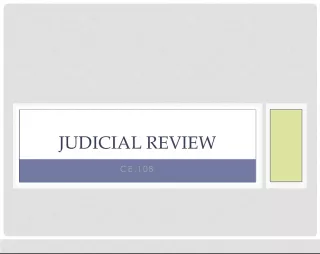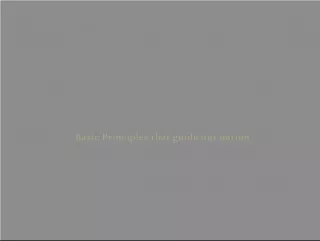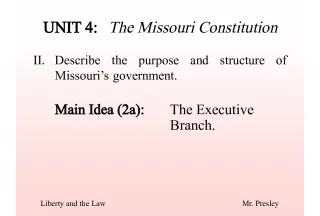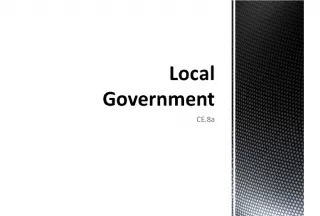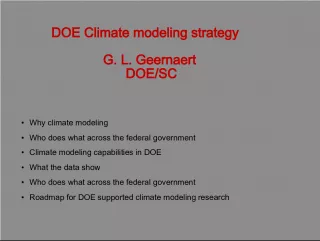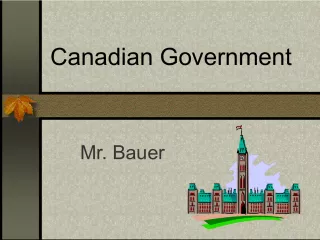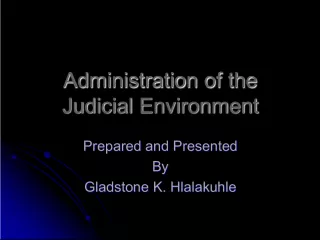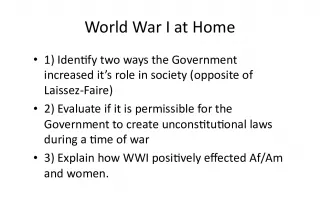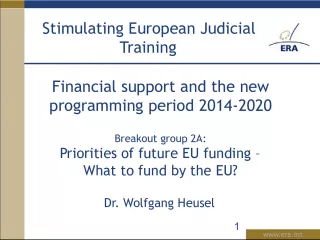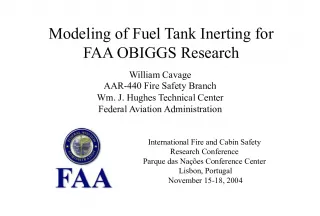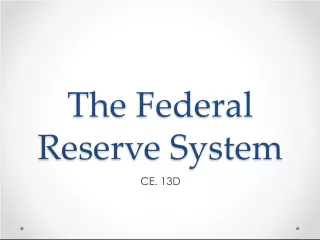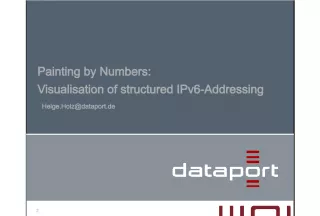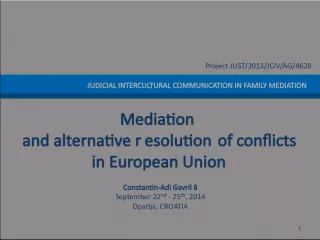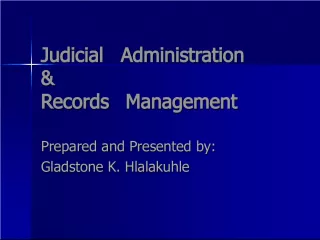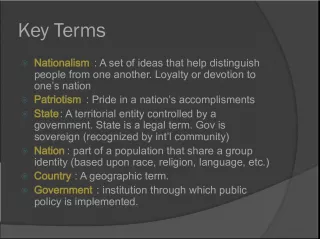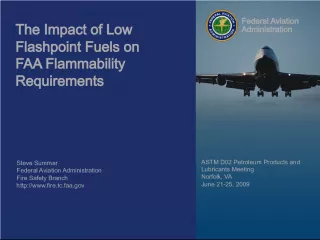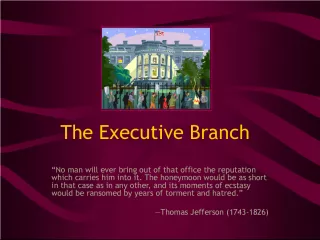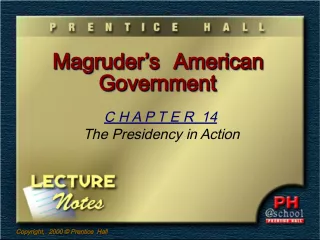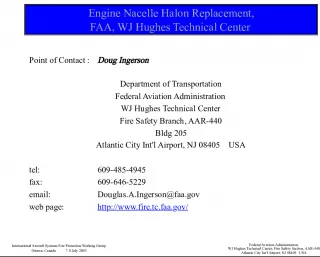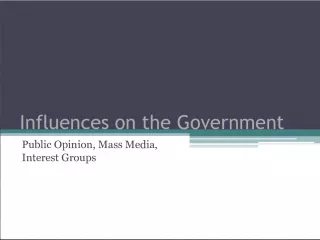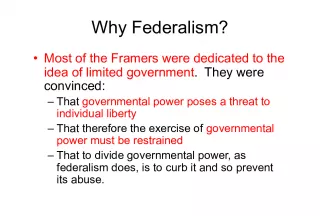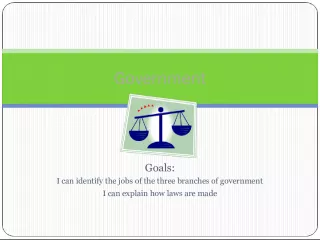The Role of the Judicial Branch in the Federal Government
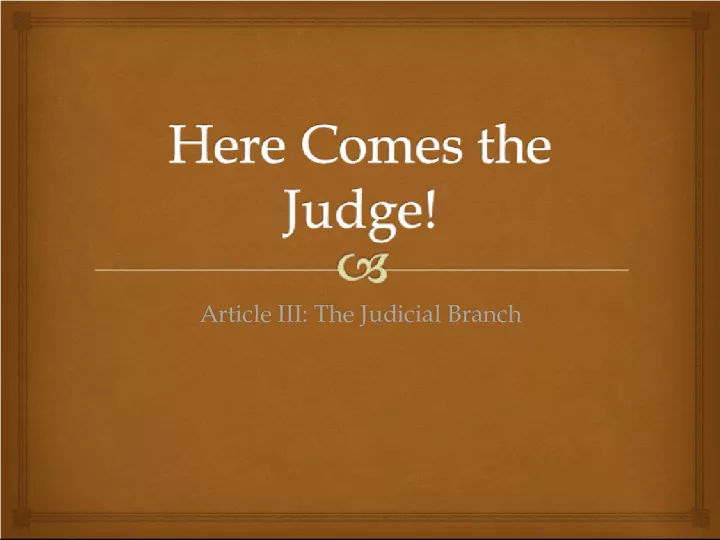

Article III outlines the structure and responsibilities of the Judicial Branch, which serves as the third branch of the federal government. Its main function is to settle civil disputes between individuals, companies
- Uploaded on | 4 Views
-
 arpitharao
arpitharao
About The Role of the Judicial Branch in the Federal Government
PowerPoint presentation about 'The Role of the Judicial Branch in the Federal Government'. This presentation describes the topic on Article III outlines the structure and responsibilities of the Judicial Branch, which serves as the third branch of the federal government. Its main function is to settle civil disputes between individuals, companies. The key topics included in this slideshow are . Download this presentation absolutely free.
Presentation Transcript
Slide1Article III: The Judicial Branch Article III: The Judicial Branch
Slide2 Make up the 3 rd branch of the federal government Use the law to settle civil disputes (between people, companies or organizations) Applies the law to the facts presented to determine the guilt or innocence (Criminal) Role of the Courts
Slide3 Means that all the laws are applied equally to every person Constitution guarantees trial by jury, presumption of innocence, right to council, right to appeal Why is equal justice hard to achieve? Equal Justice Under the Law
Slide4 Under the Articles of Confederation there were no federal courts Each State had its own system What does this mean for equal justice under the law? Supreme Court only court mentioned in the Constitution Article III Gives Congress the power to establish “inferior courts” Federal Courts
Slide5 District or Circuit Courts- federal cases start here Appeals Court-when either party questions the ruling of the lower court or (district court) Supreme Court- has final authority over legal matters Federal Court System
Slide6CriminalCases
Slide7Civil Cases
Slide8 Constitutional issues Breaking Federal laws (tax evasion, kidnapping) Disputes between states ex: water rights Disputes between citizens of different state Federal Government ex: when the Feds bring a case against someone or entity What type of cases go to a federal court?
Slide9 Foreign governments and treaties ex: When any foreign government is involved in a dispute with a US citizen, company or government Admiralty or Maritime Laws – crimes on the open seas US Diplomats: Example Ambassadors breaking laws What type of cases go to a federal court?
Slide10 Exclusive Jurisdiction: only feds hear the case Concurrent Jurisdiction: feds and state courts may hear case Types of Jurisdiction
Slide11 Where all federal trials and lawsuits begin-known as “original jurisdiction” Witnesses testify and juries hear cases HOW MANY DISTRICTS? WHAT DISTRICT IS NM IN? US District Courts
Slide12 Other names: Appellate Courts, Circuit Courts Reviews the decisions of the lower courts which is “appellate jurisdiction” No jury a panel of 3 judges reviews and makes a decision 12 US courts of appeals has jurisdiction over a specific region Court of Appeals for the Federal Circuit has nationwide authority US Court of Appeals
Slide13 Upholding the findings of a lower court Reversing the findings of a lower court Remanding to send the case back to a lower court for a retrial Rulings are only on whether any of the defendants rights have been violated Opinion of the Court is an explanation of the ruling Opinion often based on Precedent -prior rulings Decisions of the Court of Appeals 3 Options
Slide14 The President along with the advise and consent of the Senate appoints federal judges It’s a political thing/usually the same party and like philosophy of the Prez A job for life! So You Want to be a Judge
Slide15 Magistrates take care of the minor judicial duties (issue warrants, determine whether a case should go to trial, set bail) US Attorneys: Each district court has 1 US Attorney and several deputies-they prosecute people who are accused of breaking federal laws US Marshalls: Collect fines, make arrests, serve legal papers Other Jobs
Slide16 Can preside over disputes between states and cases involving foreign countries Otherwise it hears cases on appeal from lower courts Gets to choose the cases it hears Refusal to hear a case means the decisions of the lower court stand Jurisdiction of the Supreme Court
Slide17 8 Associate and 1 Chief Justice Main duty is to decide on cases/ but also make policy indirectly President nominates a justice and the individual must be confirmed by the Senate Appointed for life No constitutional requirements to be a justice About the Court
Slide18 Executive and Legislative Branches must follow the decisions of the court Judicial Review: The court can review any federal, state or local law or action to make sure it is constitutional Judicial Review was established in the case of Marbury v. Madison in 1803 (page 260) Powers of the Court
Slide19 Court relies on the executive branch and local officials to carry out its decisions (think desegregation) Congress can change or tweek laws deemed unconstitutional Limits to Power
Slide20 Meets from the first Monday in October- until the business of the court is complete usually late June/early July 4 of the 9 Justices must agree to hear a case before it is placed on the court docket Many cases are appealed to the Supreme Court only a small fraction are heard and even a smaller percentage get full hearings The Workings of the Court
Slide21 Major constitutional issues Cases must deal with real people and events Legal rather than political issues Writ of Certiorari- “make more certain” directs a lower court to send its case records to the Supreme Court How do they decide what to hear?
Slide22 Written Arguments: Briefs explain each sides position in a case Lawyers present oral arguments (30 min) justices then ask questions Conferences in secret to discuss the merits of the case- 5 need a majority of justices Opinions Announcement of Opinions The Process to Deciding a Case
Slide23 Majority Opinion: written by one justice presents the view of the majority of justices Concurrent Opinion: Justices may agree with the majority but have different legal reasons for doing so Dissenting Opinion: Justices who oppose the majority opinion Unanimous Opinion: All Agree Types of Opinions
Slide24 The Law based on the concept of “stare decisis” let the decision stand Precedent matters Social and Political Conditions- while mostly immune from these pressures, court reinterprets laws based on social norms think Plessy v. Ferguson and Brown v. Board of Education Differing Legal Views: Activist v. Constitutionalist Personal Beliefs Influences on the Justices’ Opinions
